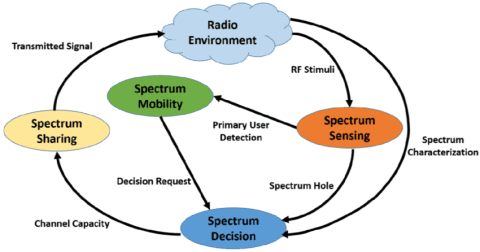With the rapid growth of wireless communication there are many advances that are discovered and still in development due to the demand of innovations, competitions investment and regulations in radio spectrum is needed. One of the main advancement is Cognitive radio otherwise defined as Software defined radio which is a programmed radio that can change its transmitter parameters based on interaction with the environment in which it operates.
In other words, It is a collection of hardware and software technologies where some of the radio’s operating functions are implemented through modifiable software operating on programmable processing technologies.
Generally it has two functionalities:
Cognitive capability
• To sense or capture the information from its radio environment
• To precisely identify the portions of the spectrum that are unused at a specific time or location
Reconfigurability
• The CR can be programmed to transmit and receive on a variety of frequencies and to use different transmission access technologies by its hardware design.
It is responsible for completing variety of processes including environment sensing, seamless Positioning and Interoperability, Statistical learning and tracking, maintaining security and privacy, spectrum sensing , mobility management and so on.
Protocol layering is a well-established method of achieving some of the goals of this radio architecture. For programming the Java Virtual Machine(JVM) defines a general purpose computing engine that hides the details of the computer’s native Instruction Set Architecture (ISA) resulting in a platform independent Internet applications language.
 credit: third party image reference
credit: third party image reference
The survey on this radio architecture is organized based on different artificial intelligence approaches including the following: (a) fuzzy logic, (b) genetic algorithms, (c) game theory, (d) neural networks, (e) reinforcement learning, (f) support vector machine, (g) decision tree,(h) case-based reasoning (i) entropy, (j) Bayesian, etc.
Cognitive radios are really helpful in establishing Medical Body Area Networks (MBAN). MBANs are generally used for implementing ubiquitous patient monitoring in hospitals. Ubiquitous monitoring can help to instantly notify the doctors regarding the vital information of patients such as blood pressure, sugar level, blood oxygen and electrocardiogram (ECG), etc. Even other more updates are there on this Blog of uses now
